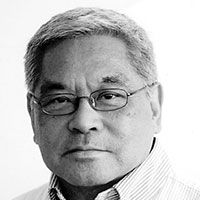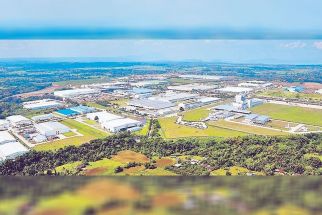Pinoys in Canada

March 11, 2007 | 12:00am
Canada has changed a lot since I landed in Vancouver some 13 years ago. 2007 is an excellent year to reflect on the country and its people. Many say that Canada today is more like a kaleidoscope instead of just a multi-cultural mosaic. However, ethnically-diverse neighborhoods still exist.
Canada has now the highest immigration rate of any country in the world. We are also trying to have a better understanding of who succeeds in the country and why. In ten years time, 22 percent of the population will be foreign-born. South Asians are still the fastest-growing group, and will soon catch up with the Chinese. By 2017, each group will number around 1.8 million and put together, they will make up half the country’s visible minorities.
I am reminded of the major developments cited by Terra Nova Market Strategies of Toronto:
• From passive tolerance to active inclusion  Tolerance was often used to described Canada. But it suggested that we put up with people rather than embrace them. It has changed a lot these days. Increased immigration and our reliance on it means that ethnicity is almost beside the point.
• From nationalism to internationalism  Canadians showed more interest in world affairs. We want to understand Canada’s role on the world stage and we care what goes on in places few had heard of a decade ago. For example, more and more documentaries are being filmed in the Philippines in an effort to know more about the Filipinos and their country.
• From overused idols to great Canadians everywhere  Hockey, pop stars, Keifer Sutherland, Celine Dion, Pamela Anderson and Shania can take a rest. Multi-racial Canadians are everywhere winning prices and world attention in the arts, literature, sports, science, music, technology, food and beverage, wine, animation, architecture, tourism and more.
• From "old image" to God’s greatest experiment  Canada’s old images of snow, peaceful country and frozen mountains and giant trees are old fashioned. The new concepts associated with the country include, "A country of great progress", "Leading edge thinking." And "Canada: the best kept secret."
• From America’s little brother to the big brother  Canada has grown up and has discovered the world and now has strong opinions. Many Americans are having a difficult time dealing with Canada’s voice. There’s the question of passports, war in Iraq, use of medical marijuana, gay marriage and very recently the Maher Arar affair. Canada has already cleared the name of a Syrian-born Canadian. He was detained by American authorities in 2002 and deported to Syria, where he was imprisoned and tortured for nearly a year. There was no evidence that Arar was a security risk but the Americans refuse to remove his name from the terror watch list.
Today in Canada, it is more likely to be issues that connect people and not cultural background.
Then, I started to think about the Filipinos in British Columbia. According to the Citizenship and Immigration Canada, about 2,500 Filipinos move to Vancouver yearly. In the economic category, which includes live-in caregivers, 13,787 Filipinos, mostly women, migrated to Canada in 2005. The census of Statistics Canada reported that in 2001, over 308,575 out of the total Canadian population are people of Filipino origin, or approximately one percent of Canada’s population. The 2006 census showed that there are approximately over 424,500 Filipinos (rough estimate and could be more) are currently residing in Canada and over 95,000 people of Filipino descent live in British Columbia.
My personal classification of Filipinos in B.C. are:
• The Traditionalists  They are the early settlers who arrived in the ’50s and they are now in their 80’s. They have retained a strong Filipino working-class identification in their religious, and cultural traits. Some are more Filipinos than the Filipinos back home.
• The Exiles  They came in the early ’70s. Many are caregivers and the others were the politicized immigrants and activists against Marcos and Aquino. They are now Canadianized but long for the Manila glory days.
• The Newcomers or new immigrants are more varied and global in their outlook. They are seeking a better quality of life and are alert to contemporary expectations and are cognizant of the ’90s boom in the Pacific Rim. The newcomers are more business-minded and do not depend on Filipino groups for emotional socio-economic support.
• Second/Third Generation Pinoys  They look Filipino but are actually Canadian Gen-x’ers. Many do not speak Tagalog but many are still dominated by their parents and relatives. Many are not ambitious and lack direction in life. The passive Pacific Northwest lifestyle have made them less aggressive and slow in getting into their career paths. Many are well-educated but hold low-paying jobs and still live with their parents. Though lacking in drive they are greatly interested in knowing more about their Filipino roots.
As the Filipino community enlarge, surely enough, another category is forthcoming, the New Newcomers.
Canada has now the highest immigration rate of any country in the world. We are also trying to have a better understanding of who succeeds in the country and why. In ten years time, 22 percent of the population will be foreign-born. South Asians are still the fastest-growing group, and will soon catch up with the Chinese. By 2017, each group will number around 1.8 million and put together, they will make up half the country’s visible minorities.
I am reminded of the major developments cited by Terra Nova Market Strategies of Toronto:
• From passive tolerance to active inclusion  Tolerance was often used to described Canada. But it suggested that we put up with people rather than embrace them. It has changed a lot these days. Increased immigration and our reliance on it means that ethnicity is almost beside the point.
• From nationalism to internationalism  Canadians showed more interest in world affairs. We want to understand Canada’s role on the world stage and we care what goes on in places few had heard of a decade ago. For example, more and more documentaries are being filmed in the Philippines in an effort to know more about the Filipinos and their country.
• From overused idols to great Canadians everywhere  Hockey, pop stars, Keifer Sutherland, Celine Dion, Pamela Anderson and Shania can take a rest. Multi-racial Canadians are everywhere winning prices and world attention in the arts, literature, sports, science, music, technology, food and beverage, wine, animation, architecture, tourism and more.
• From "old image" to God’s greatest experiment  Canada’s old images of snow, peaceful country and frozen mountains and giant trees are old fashioned. The new concepts associated with the country include, "A country of great progress", "Leading edge thinking." And "Canada: the best kept secret."
• From America’s little brother to the big brother  Canada has grown up and has discovered the world and now has strong opinions. Many Americans are having a difficult time dealing with Canada’s voice. There’s the question of passports, war in Iraq, use of medical marijuana, gay marriage and very recently the Maher Arar affair. Canada has already cleared the name of a Syrian-born Canadian. He was detained by American authorities in 2002 and deported to Syria, where he was imprisoned and tortured for nearly a year. There was no evidence that Arar was a security risk but the Americans refuse to remove his name from the terror watch list.
Today in Canada, it is more likely to be issues that connect people and not cultural background.
Then, I started to think about the Filipinos in British Columbia. According to the Citizenship and Immigration Canada, about 2,500 Filipinos move to Vancouver yearly. In the economic category, which includes live-in caregivers, 13,787 Filipinos, mostly women, migrated to Canada in 2005. The census of Statistics Canada reported that in 2001, over 308,575 out of the total Canadian population are people of Filipino origin, or approximately one percent of Canada’s population. The 2006 census showed that there are approximately over 424,500 Filipinos (rough estimate and could be more) are currently residing in Canada and over 95,000 people of Filipino descent live in British Columbia.
My personal classification of Filipinos in B.C. are:
• The Traditionalists  They are the early settlers who arrived in the ’50s and they are now in their 80’s. They have retained a strong Filipino working-class identification in their religious, and cultural traits. Some are more Filipinos than the Filipinos back home.
• The Exiles  They came in the early ’70s. Many are caregivers and the others were the politicized immigrants and activists against Marcos and Aquino. They are now Canadianized but long for the Manila glory days.
• The Newcomers or new immigrants are more varied and global in their outlook. They are seeking a better quality of life and are alert to contemporary expectations and are cognizant of the ’90s boom in the Pacific Rim. The newcomers are more business-minded and do not depend on Filipino groups for emotional socio-economic support.
• Second/Third Generation Pinoys  They look Filipino but are actually Canadian Gen-x’ers. Many do not speak Tagalog but many are still dominated by their parents and relatives. Many are not ambitious and lack direction in life. The passive Pacific Northwest lifestyle have made them less aggressive and slow in getting into their career paths. Many are well-educated but hold low-paying jobs and still live with their parents. Though lacking in drive they are greatly interested in knowing more about their Filipino roots.
As the Filipino community enlarge, surely enough, another category is forthcoming, the New Newcomers.
BrandSpace Articles
<
>
- Latest
- Trending
Trending
Latest
Trending
Latest
18 hours ago
Recommended



























